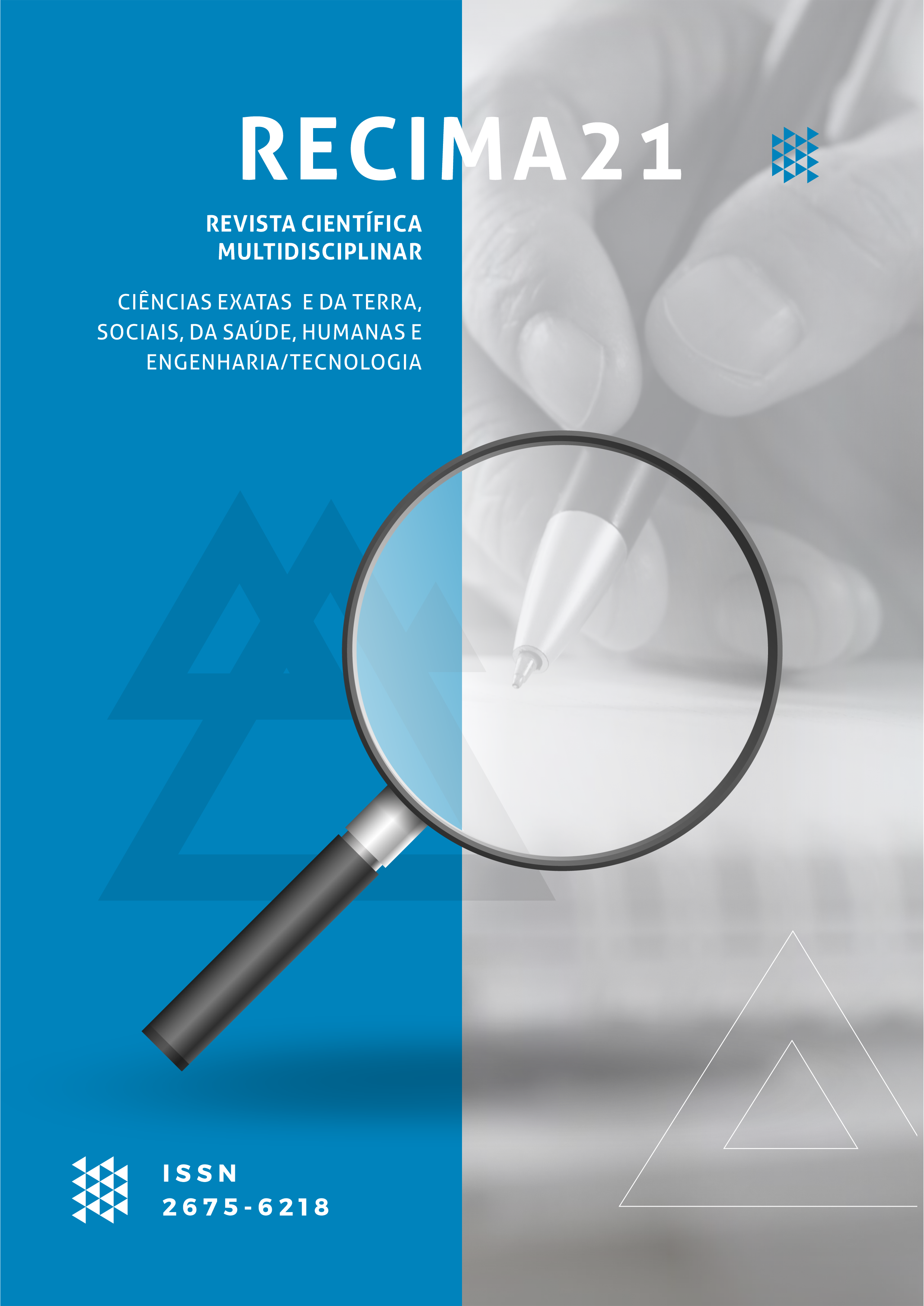REPRODUCIBILITY OF THE SUTURE TECHNIQUE WITH POLYPROPYLENE MEMBRANE IN SMALL TRAUMATIC AMPUTATIONS, IN EMERGENCY CARE: A LOW-COST AND EASY-TO-HANDLE ALTERNATIVE
DOI:
https://doi.org/10.47820/recima21.v3i9.1834Keywords:
suture; polypropylene membrane; traumatic amputation; Public Health; prompt service.Abstract
Introduction: the traumatic amputations, tissue loss or part of an organ, such as phalanges, fingers or limbs, correspond to a great part of the assistances in the Emergency Room of the Public Network of the country. Thus, proposing a correct technique for its suture that is easy to reproduce and low cost is an alternative to Public Health, reducing hospitalizations and surgeries and, consequently, having the patient rehabilitated as early as possible and reinserted into his or her routine. Methodology: This is a descriptive case series study. We evaluated 11 patients with traumatic injuries of digital pulp and phalanx, in chirodactyls, forearm, leg and knee, between September 2019 and December 2021, who received suture with polypropylene membrane. Results: the age of patients ranged from 04 to 68 years, with 07 male patients (63.64%) and 04 female patients (36.36%).Conclusions: the present technique used in the study is of paramount importance in the Public Health field, for being of low cost, without the need for hospitalization, performed in the Emergency Room itself and without the need for specialists, with low complication rates and satisfactory results, both in the closure / healing of the lesion, and the satisfaction of the user in relation to the Public Health System.
Downloads
References
Vargas MA, Ferrazzo S, Schoeller SD, Drago LC, Ramos FR. The healthcare network to the amputee. Acta Paul Enferm. 2014; 27(6):526-32
Peixoto AM, Zimpel AS, Oliveira ACA, Monteiro RLS, Carneiro TKG. Prevalence of upper and lower limb amputations of SUS patients in the state of Alagoas between 2008 and 2015. Fisioter Pesqui. 2017;24(4):378-384
Leite CF, Frankini AD, DeDavid EB, Haffner J. Análise retrospectiva sobre a prevalência de amputações bilaterais de membros inferiores. J Vasc Br. 2004;3(3):206-213
Barmparas G, Inaba K, Teixeira PGR, Dubose JJ, Criscuoli M, Talving P, Plurad D, Green D, Demetriades D. Epidemiology of Post-Traumatic Limb Amputation: A National Trauma Databank Analysis. Am Surg. 2010; 76 (11):1214-22
Friedman L, Krupczak C, Brandt-Rauf S, Forst L. Occupational amputations in Illinois 2000-2007: BLS vs. data linkage of trauma registry, hospital discharge, workers compensation databases and OSHA citations. Injury. 2013;44(5):667-73
Silva JB, Gerhardt S. Trauma do complexo ungueal. Rev Bras Ortop, 2014;49(2):111–115
Figueiredo LA, Ribeiro RS, Melo ALB, Lima AL, Terra BB e Ventim FC. Polypropylene prosthesis for the treatment of fingertip injuries. Description of surgical technique and results. Rev Bras Ortop 2017;52(6):685–692
Oetgen, M.E., Dodds, S.D. Non-operative treatment of common finger injuries. Curr Rev Musculoskelet Med 1, 97–102 (2008). https://doi.org/10.1007/s12178-007-9014-z
Leow MEL, Ng WKM, Pereira BP, Kueh KA, Pho RWH. A technique of acrylic nail fixation in multilayered silicone finger prostheses Prosthetics and Orthotics International. Volume 21 - Issue 3 - p 199-201, 1997. doi: 10.3109/03093649709164557
Tazima MFGS, Vicente YAMVA, Moriya T. Biologia da ferida e cicatrização. Medicina (Ribeirão Preto), 41 (3): 259-64, 2008
Araújo ID. Fisiologia da cicatrização. In: Petroian A. Lições de Cirurgia, 1ª ed., ed interlivros, p. 101-14, 1997
Downloads
Published
How to Cite
Issue
Section
Categories
License
Copyright (c) 2022 RECIMA21 - Revista Científica Multidisciplinar - ISSN 2675-6218

This work is licensed under a Creative Commons Attribution 4.0 International License.
Os direitos autorais dos artigos/resenhas/TCCs publicados pertecem à revista RECIMA21, e seguem o padrão Creative Commons (CC BY 4.0), permitindo a cópia ou reprodução, desde que cite a fonte e respeite os direitos dos autores e contenham menção aos mesmos nos créditos. Toda e qualquer obra publicada na revista, seu conteúdo é de responsabilidade dos autores, cabendo a RECIMA21 apenas ser o veículo de divulgação, seguindo os padrões nacionais e internacionais de publicação.













